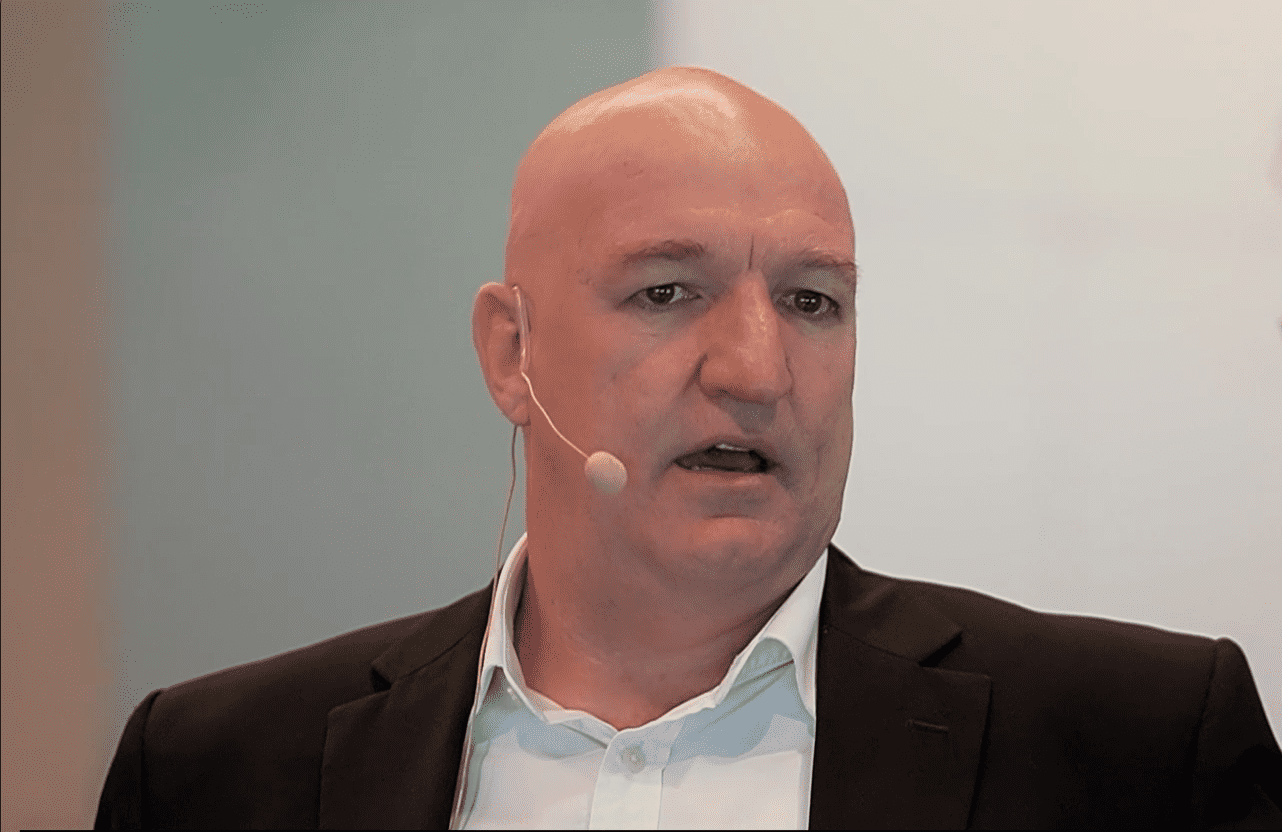Three-dimensional printing sparked an explosion of excitement during 2012. The mainstream adoption of this technology led The Economist to predict a "third industrial revolution" and to envision the "factory of the future." The former editor-in-chief of Wired Magazine left his post to become part of the "maker" movement he believes "will be bigger than the web." You can expect the hyperbole to continue.
But is it really hyperbole? Not too long from now we could be printing our own clothes, our own cars, even our own ears! New possibilities seem to pop up on a weekly, if not daily, basis.
As a result, separating a future reality from a pipe dream can be incredibly difficult. Even the stock market (or especially the stock market) has had difficulty evaluating the key players in this industry.
The chart below illustrates the market's changing sentiment – from euphoria to anxiety – over the past year. After the share prices of the two largest 3-D printing companies, 3D Systems (NYSE: DDD) and Stratasys (NASDAQ: SSYS) , went on a tear during 2012, both companies watched their shares tumble, even after reporting impressive annual results. In investing terms, both of these stocks appeared to be "priced for perfection" at the start of 2013.
DDD data by YCharts
So, where do we look to gain a better understanding of 3-D printing's true potential? Perhaps we should recall a technology visionary of the past, who witnessed the transformative power of advanced machines firsthand.
In 1989, none other than Apple's young founder, Steve Jobs, described the effect of empowering individuals with new, advanced "tools" in a fascinating interview with Inc. magazine:
JOBS: You see, I think humans are basically tool builders, and the computer is the most remarkable tool we've ever built. The big insight a lot of us had in the 1970s had to do with the importance of putting that tool in the hands of individuals. Let's say that—for the same amount of money it takes to build the most powerful computer in the world—you could make 1,000 computers with one-thousandth the power and put them in the hands of 1,000 creative people. You'll get more out of doing that than out of having one person use the most powerful computer in the world. Because people are inherently creative. They will use tools in ways the toolmakers never thought possible. And once a person figures out how to do something with that tool, he or she can share it with the other 999.
Fast-forward 24 years, replace "computers" with "3-D printers", and it is easy to see how we could be on the cusp of a similar technological sea change. Steve Jobs, recognized by Inc. as the "Entrepreneur of the Decade" in the 1980s, had a knack for understanding how technologies might evolve, unlike skeptics who refuted the idea that everyone would need a PC in their homes. Similar naysayers exist today, questioning why ordinary households would ever require access to a handy 3-D printer.
Ironically, it is those ordinary households that will prove them wrong. Everyday hobbyists, or "makers" as they're often referred to, will show the world the true potential of 3-D printers, not necessarily the companies that manufacture them. Jobs elaborated on the importance of this concept as the interview continued:
INC.: That's a big idea.
JOBS: It's an extremely powerful paradigm. It's what has driven a bunch of us since this whole thing began to happen, and it hasn't changed. It hasn't changed for me since 1975. That's almost 15 years now. I believe this is one of the most important things that's going to happen in our generation. It would be easy to step back and say, "Well, it's pretty much over now." But if you look carefully, it's not over by any stretch of the imagination. The technological advances are coming at a rate that is far more ferocious than ever. To me, it's staggering to contemplate the tools we're going to be able to put in people's hands in the next few years—and I don't get impressed by this stuff so easily anymore.
So what we're doing here is driven by a fairly strong faith that people are going to continue to be as creative and as ingenious and as sharing with their results as they have been over the past 15 years. That sharing gives us a kind of leverage. For every improvement we can make in the tools we give people, we can improve the ultimate results even more, thanks to this leverage. That's what gets us so excited.
In all of my research around 3-D printing, I have yet to find an expert or CEO so vividly describe the possible evolution of this technology – and Jobs wasn't even talking about 3-D printers!
However, certain recent innovators have alluded to the idea of individual empowerment as a game-changer for 3-D printing. Fellow Fool Tim Beyers recently described his trip to tech conference SXSW, where Mary Huang, co-founder of 3-D printed design house Continuum Fashion, stated in a panel discussion: "If you give people the opportunity to be creative, they will surpass your expectations."
Huang's fashion company serves as a prime example of how 3-D printing can add value to goods that are often viewed as commodities. Shoes, jewelry, and apparel, for instance, are primarily manufactured in low-cost overseas countries. In the future, if customized manufacturing allows American companies to design and print these products in-house, this tweaks the cost-benefit equation. Why? Because these are precisely the types of goods that people might want or need to have personally customized for a perfect fit. The advantages of low-cost labor could be offset by the lower transportation costs and the ability to tailor to the customer's needs.
Innovative clothing companies like Nike (NYSE: NKE) recognize this opportunity. Nike is already using 3-D printers to craft high-tech football cleats, for example, in an effort to improve an athlete's initial acceleration during a sprint.
Shane Kohatsu, Nike's director of footwear innovation, noted that a 3-D printing laser technology referred to as Selective Laser Sintering (SLS) enabled new construction techniques that would otherwise not have been feasible: "SLS technology has revolutionized the way we design cleat plates – even beyond football – and gives Nike the ability to create solutions that were not possible within the constraints of traditional manufacturing processes."

Nike's Vapor Laser Talon shoe with a 3-D printed plate. Source: Nike
Yes, the company Phil Knight started in the 1970s with his wife's waffle iron (to create the rubber sole in Nike shoes) recognizes the power of small-scale manufacturing. One can only imagine how much easier Nike's early days would have been with a 3-D printer instead of an old kitchen appliance!
Now, 3-D printers are just one of the tools in what the company fittingly calls the "Nike Innovation Kitchen". This is where Nike's investing in Flyknit, another technology that could allow for on-site manufacturing by "knitting" shoes from precisely engineered yarns. Expect similar advancements like Nike's to continue to spread and multiply over time.
Multiplying, in fact, is what 3-D printing is all about. This next iteration of highly advanced machines, when placed in the hands of hobbyists and entrepreneurs, will spawn entirely new industries. The way they use those machines will create a multiplier effect that will enhance productivity and allow creativity to flourish.
No one will deny that 3-D printing holds tremendous promise for manufacturing companies, but the real innovation will probably take place in our own garages and start-up labs. As MIT professor and 3-D fabrication expert Neil Gershenfield puts it: "These labs form part of a larger 'maker movement' of high-tech do-it-yourselfers, who are democratizing access to the modern means to make things."

3-D printed prototype of a Bosch cordless saw, printed on a Stratasys printer. Source: Stratasys, Inc.
If the "maker movement" sounds a lot like the "hacker generation" of the '80s and '90s, well, it should. The makers will go on to create the Apples and Microsofts of future generations. Now that the means of production exist at our fingertips, barriers to entry are disappearing fast. What Steve Jobs described as a "paradigm shift" in the PC era will likely unfold as a radical manufacturing transformation in the next decade.
For investors interested in the 3-D printing arena, be sure to differentiate between the hype surrounding the technology and the fundamentals of the publicly traded companies. Easy to use hobbyist machines, like those sold by 3-D Systems, will allow everyday folks to innovate in ways we cannot currently imagine – this potential is what would excite a visionary like Steve Jobs.
Looking for something a little more predictable? The Australian Financial Review says "good quality Australian shares that have a long history of paying dividends are a real alternative to a term deposit." Get "3 Stocks for the Great Dividend Boom" in our special FREE report. Click here now to find out the names, stock symbols, and full research for our three favourite income ideas, all completely free!
More reading
The Motley Fool's purpose is to help the world invest, better. Click here for your free subscription to Take Stock, The Motley Fool's free investing newsletter. Packed with stock ideas and investing advice, it is essential reading for anyone looking to build and grow their wealth in the years ahead. This article contains general investment advice only (under AFSL 400691). Authorised by Bruce Jackson.
A version of this article, written by Isaac Pino, CPA, originally appeared on fool.com.








